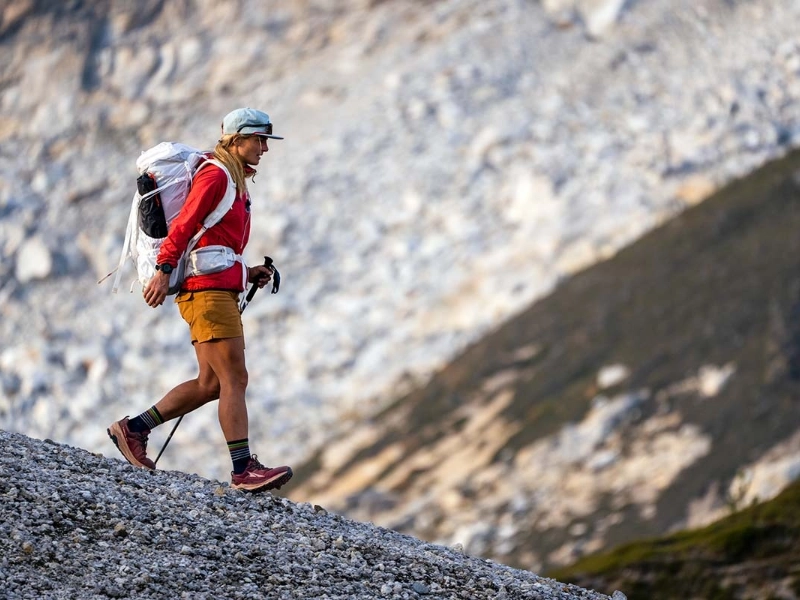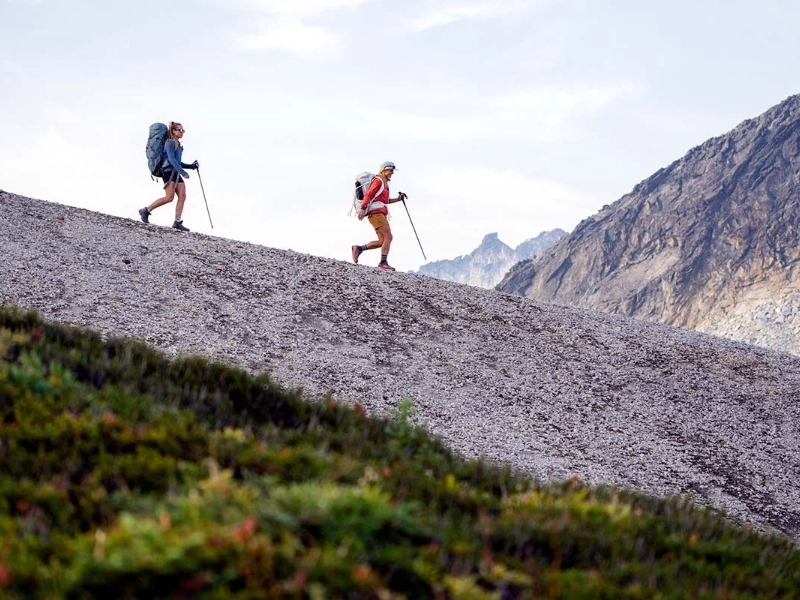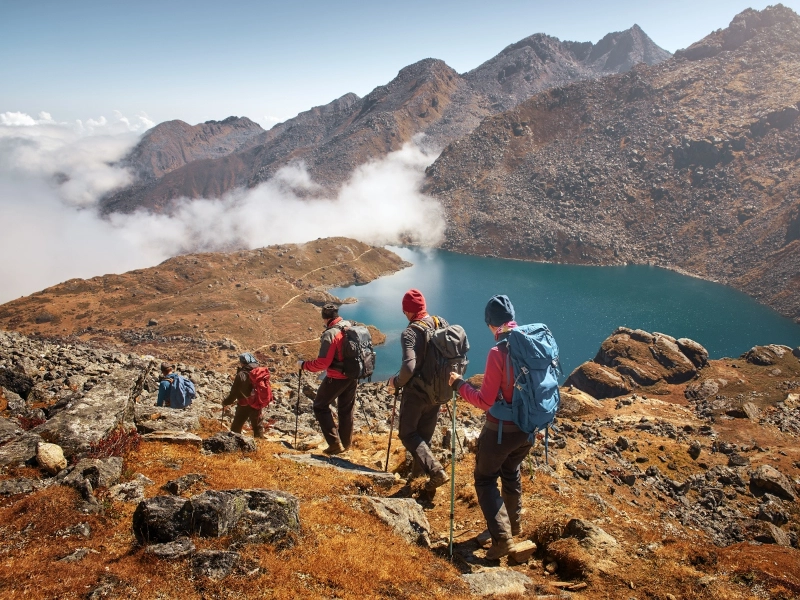Once you've ascended a hill, walking downhill might appear easy, but it can be taxing on the knees and joints. To reduce injury, it's crucial to train for this kind of hiking. Using your core muscles to assist maintain your spine and lessen back pain is one of the keys to success.

 The quadriceps, which are located in the front of your legs, contract eccentrically—that is, their fibres lengthen—when you walk downhill. Because your muscles absorb more impact than your joints, this helps prevent injuries.
Maintaining your knees bent at impact and regulating the length of your stride will help you achieve better form. Taking short, deliberate steps is also a better idea than sprinting to cover ground. This gives you an excellent workout without aggravating your knee and foot joints with every step.
When walking downhill, knee pain is a common complaint among walkers. This might be the result of each stride striking the ground more forcefully and at an unusual angle. Additionally, tendons or weak muscles, such the iliotibial band that runs around your outside knee, may be the culprit.
Try to keep your knees slightly bent at impact and adjust the length of your stride to assist reduce knee pain. Incorporating hill work into your weekly workout programme can help you develop the muscles and ligaments in your legs through the exercise of walking downhill.
The quadriceps, which are located in the front of your legs, contract eccentrically—that is, their fibres lengthen—when you walk downhill. Because your muscles absorb more impact than your joints, this helps prevent injuries.
Maintaining your knees bent at impact and regulating the length of your stride will help you achieve better form. Taking short, deliberate steps is also a better idea than sprinting to cover ground. This gives you an excellent workout without aggravating your knee and foot joints with every step.
When walking downhill, knee pain is a common complaint among walkers. This might be the result of each stride striking the ground more forcefully and at an unusual angle. Additionally, tendons or weak muscles, such the iliotibial band that runs around your outside knee, may be the culprit.
Try to keep your knees slightly bent at impact and adjust the length of your stride to assist reduce knee pain. Incorporating hill work into your weekly workout programme can help you develop the muscles and ligaments in your legs through the exercise of walking downhill.
 Stability and balance are increased when you walk downhill because you have to strengthen your back and stomach muscles as well as your core. This is particularly crucial as you age since weak core muscles increase the risk of falls and injuries. Your glute and quadriceps muscles, which are critical for avoiding knee and hip problems, are also worked out when walking downhill.
When descending, Richards advises cutting your stride short and paying attention to where your feet should land. This will shorten the time each foot is in touch with the ground, which will assist ease the tension on your knees and feet. Additionally, he advises against leaning too far back and in favour of maintaining an upright or slightly forward posture for stability.
Walking downhill as part of your hiking regimen is a terrific way to add excitement and variation to your hikes, even though it may be more taxing on the joints and muscles. It's an enjoyable activity that you can engage with friends and family in addition to strengthening your body.
Stability and balance are increased when you walk downhill because you have to strengthen your back and stomach muscles as well as your core. This is particularly crucial as you age since weak core muscles increase the risk of falls and injuries. Your glute and quadriceps muscles, which are critical for avoiding knee and hip problems, are also worked out when walking downhill.
When descending, Richards advises cutting your stride short and paying attention to where your feet should land. This will shorten the time each foot is in touch with the ground, which will assist ease the tension on your knees and feet. Additionally, he advises against leaning too far back and in favour of maintaining an upright or slightly forward posture for stability.
Walking downhill as part of your hiking regimen is a terrific way to add excitement and variation to your hikes, even though it may be more taxing on the joints and muscles. It's an enjoyable activity that you can engage with friends and family in addition to strengthening your body.
 Once you've topped the hill, walking downhill might seem easy, but you still need to employ control to stay balanced. You can prevent overstriding and spare your muscles and joints from bearing the brunt of each stride by maintaining an erect posture and reducing your stride.
The other reason for aching knees and ankles on long descents is because you're also using eccentric muscle contractions while you walk downhill. Walking downhill can cause some pain, therefore it's helpful to add workouts that strengthen the ankle and core muscles.
Both walking uphill and walking downhill are excellent methods to burn calories and get a decent workout, but walking uphill requires distinct muscle groups to overcome gravity. Try including additional strength training exercises like walking lunges, reverse lunges, and kettlebell deadlifts to maximise the benefits of walking uphill. By strengthening your legs and core with these workouts, you'll be able to climb even the steepest hills with ease.
Once you've topped the hill, walking downhill might seem easy, but you still need to employ control to stay balanced. You can prevent overstriding and spare your muscles and joints from bearing the brunt of each stride by maintaining an erect posture and reducing your stride.
The other reason for aching knees and ankles on long descents is because you're also using eccentric muscle contractions while you walk downhill. Walking downhill can cause some pain, therefore it's helpful to add workouts that strengthen the ankle and core muscles.
Both walking uphill and walking downhill are excellent methods to burn calories and get a decent workout, but walking uphill requires distinct muscle groups to overcome gravity. Try including additional strength training exercises like walking lunges, reverse lunges, and kettlebell deadlifts to maximise the benefits of walking uphill. By strengthening your legs and core with these workouts, you'll be able to climb even the steepest hills with ease.